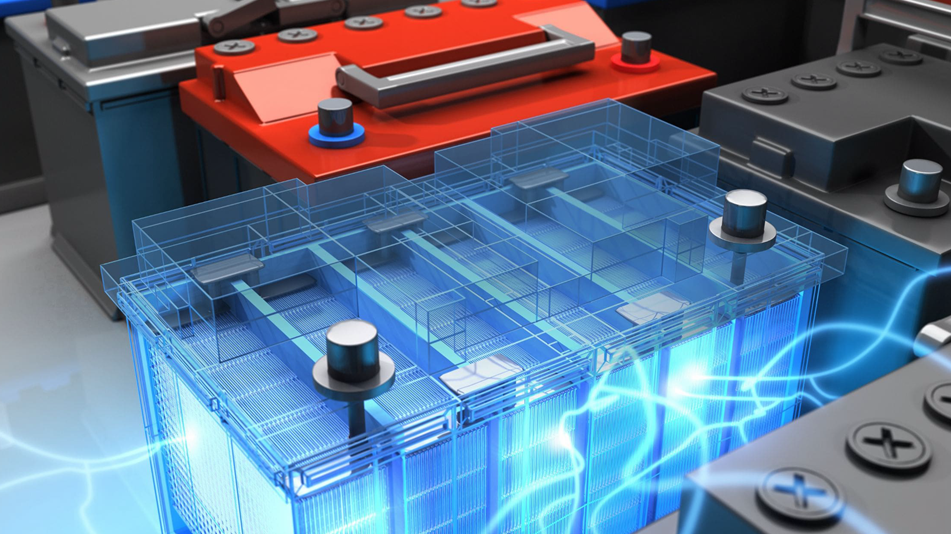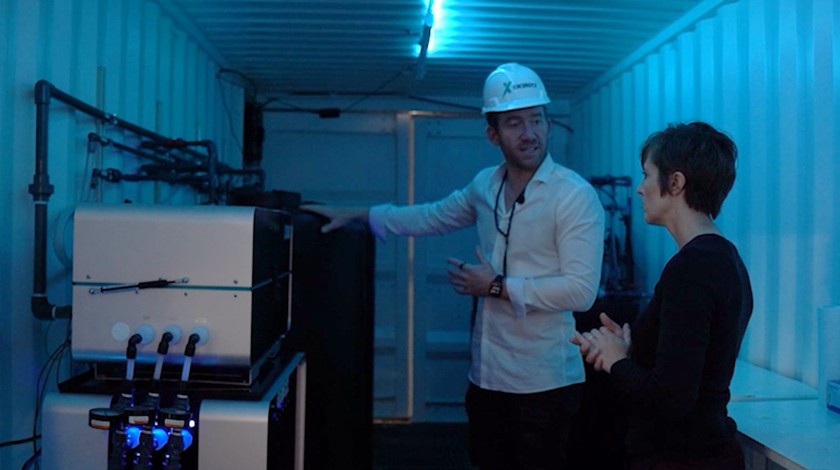Locomotive Starter Battery – Powering Up Your Train for Efficient Transportation.
مقدمة
The locomotive starter battery is an essential component of today\’s railway system. It is responsible for providing the initial power to start the locomotive engine, which then powers the train. The battery also provides backup power in case of a power failure or emergency. In this article, we will discuss the role of the locomotive starter battery in powering up trains for efficient transportation.
What is a Locomotive Starter Battery?
A locomotive starter battery is a deep-cycle battery designed to provide a high level of power for a short duration of time. It is different from a regular car battery, which is designed for cranking the engine and providing a small amount of power to the electrical system. The locomotive starter battery is much larger and provides much more power, typically in the range of several hundred to several thousand amperes.
How does a Locomotive Starter Battery Work?
The locomotive starter battery works by converting chemical energy stored in the battery cells into electrical energy. This is done through a process called electrochemical reaction, which involves the movement of electrons from one electrode to another. The battery cells contain two electrodes – a positive electrode (anode) and a negative electrode (cathode) – and an electrolyte solution that allows the movement of ions between the electrodes.
When the battery is connected to the locomotive engine, the electrical load from the engine draws power from the battery. This causes a chemical reaction to occur in the battery cells, which releases electrons from the anode and sends them to the cathode. The movement of electrons generates a flow of electrical current, which powers the engine and the train.
Why is a Locomotive Starter Battery Important?
The locomotive starter battery is crucial for the efficient operation of the railway system. Without it, the locomotive engine would not be able to start, and the train would not be able to move. In addition, the battery provides backup power in case of a power failure or emergency, ensuring that the train can continue to operate smoothly.
The use of a locomotive starter battery also helps to reduce emissions and improve fuel economy. By providing initial power to the engine, the battery reduces the load on the alternator and the engine, which reduces fuel consumption and emissions. This helps to make trains more environmentally friendly and cost-efficient.
خاتمة
The locomotive starter battery is a critical component of the railway system. It provides the initial power to start the engine and powers the train, ensuring efficient and reliable transportation. The battery also provides backup power in case of a power failure or emergency, making trains more reliable and safe. As the railway industry continues to evolve and become more environmentally conscious, the use of a locomotive starter battery will become even more important in driving innovation and sustainability.
-
 In recent years, there has been a significant shift towards electric forklifts as businesses recognize the numerous advantages they offer. One crucial component that contributes to the success of electric forklifts is the lithium battery. This article will explore the advantages of using an electric forklift lithium battery, highlighting the reasons why it has become the preferred choice for many...اقرأ أكثر
In recent years, there has been a significant shift towards electric forklifts as businesses recognize the numerous advantages they offer. One crucial component that contributes to the success of electric forklifts is the lithium battery. This article will explore the advantages of using an electric forklift lithium battery, highlighting the reasons why it has become the preferred choice for many...اقرأ أكثر -
 Introduction In recent years, there has been a growing trend towards sustainable and clean energy sources as the world strives to reduce its dependence on fossil fuels. The increasing demand for electric vehicles, renewable energy storage, and uninterrupted power supply has led to a surge in the need for industrial batteries. These batteries play a crucial role in powering...اقرأ أكثر
Introduction In recent years, there has been a growing trend towards sustainable and clean energy sources as the world strives to reduce its dependence on fossil fuels. The increasing demand for electric vehicles, renewable energy storage, and uninterrupted power supply has led to a surge in the need for industrial batteries. These batteries play a crucial role in powering...اقرأ أكثر -
 Are you tired of constantly having to replace your car battery or other power source? Do you want a longer-lasting and more reliable energy solution? Look no further than the 12V 100Ah Lithium Battery LifePO4. This lithium battery is the perfect power source for a variety of applications, from cars and boats to solar energy storage systems and off-grid...اقرأ أكثر
Are you tired of constantly having to replace your car battery or other power source? Do you want a longer-lasting and more reliable energy solution? Look no further than the 12V 100Ah Lithium Battery LifePO4. This lithium battery is the perfect power source for a variety of applications, from cars and boats to solar energy storage systems and off-grid...اقرأ أكثر -
 In today's rapidly advancing technological world, energy storage is becoming increasingly important. High performance applications require power sources that are not only reliable and efficient, but also long-lasting. One such power source is the 48V LiFePO4 battery. LiFePO4 batteries, also known as Lithium Iron Phosphate batteries, are a type of rechargeable battery that provide a number of advantages over...اقرأ أكثر
In today's rapidly advancing technological world, energy storage is becoming increasingly important. High performance applications require power sources that are not only reliable and efficient, but also long-lasting. One such power source is the 48V LiFePO4 battery. LiFePO4 batteries, also known as Lithium Iron Phosphate batteries, are a type of rechargeable battery that provide a number of advantages over...اقرأ أكثر -
 In today's fast-paced and technology-driven world, the demand for efficient and sustainable energy sources is on the rise. As traditional energy grids struggle to keep up with the increasing energy demands, the concept of smart grids has gained significant attention. Smart grids aim to optimize energy distribution and consumption through advanced technologies and innovative solutions. One such solution that is...اقرأ أكثر
In today's fast-paced and technology-driven world, the demand for efficient and sustainable energy sources is on the rise. As traditional energy grids struggle to keep up with the increasing energy demands, the concept of smart grids has gained significant attention. Smart grids aim to optimize energy distribution and consumption through advanced technologies and innovative solutions. One such solution that is...اقرأ أكثر -
 Lithium batteries have revolutionized the way we power our devices and vehicles. Among the many variants available in the market, the 100Ah lithium battery Lifepo4 stands out for its remarkable longevity. In this article, we will explore the reasons behind its long lifespan and the advantages it offers. Firstly, let\'s understand what Lifepo4 means. Lifepo4 is short for lithium...اقرأ أكثر
Lithium batteries have revolutionized the way we power our devices and vehicles. Among the many variants available in the market, the 100Ah lithium battery Lifepo4 stands out for its remarkable longevity. In this article, we will explore the reasons behind its long lifespan and the advantages it offers. Firstly, let\'s understand what Lifepo4 means. Lifepo4 is short for lithium...اقرأ أكثر -
 في عالم اليوم سريع الخطى ، يعد مصدر الطاقة الموثوق به أمرًا بالغ الأهمية لتشغيل الأجهزة الإلكترونية المختلفة. أدت التطورات التكنولوجية إلى تطوير بطاريات عالية الأداء ، ومن بين هذه البطاريات بطارية 48V LiFePO4. بطارية LiFePO4 أو بطارية فوسفات حديد الليثيوم هي نوع من البطاريات القابلة لإعادة الشحن التي اكتسبت شعبية بسبب أدائها الممتاز وامتدادها ...اقرأ أكثر
في عالم اليوم سريع الخطى ، يعد مصدر الطاقة الموثوق به أمرًا بالغ الأهمية لتشغيل الأجهزة الإلكترونية المختلفة. أدت التطورات التكنولوجية إلى تطوير بطاريات عالية الأداء ، ومن بين هذه البطاريات بطارية 48V LiFePO4. بطارية LiFePO4 أو بطارية فوسفات حديد الليثيوم هي نوع من البطاريات القابلة لإعادة الشحن التي اكتسبت شعبية بسبب أدائها الممتاز وامتدادها ...اقرأ أكثر

